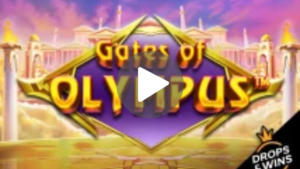This coming August 16 will mark six years for the reason that passing of Cuban-born, naturalized Mexican boxer José Ángel Nápoles—recognized merely as “Mantequilla” Nápoles to the boxing world and its followers. He died in Mexico Metropolis on the age of 79, closing a life that was sensible contained in the ring however marred by monetary hardship in his remaining days. Nápoles stays one of many biggest fighters in boxing historical past—a real icon whose identify is carved into the game’s highest ranks.
A lot in order that in 2007, the celebrated boxing journal The Ring ranked him No. 32 on its checklist of the 100 biggest fighters of all time.
It’s price underscoring that Nápoles was way more than only a Latin American determine. He transcended borders. His profession lit up the boxing universe from its early levels in Cuba—a journey so uncommon and noteworthy that it appeared destined for immortality.
Born on April 13, 1940, in Santiago de Cuba—the island’s second most necessary metropolis—Nápoles was nonetheless younger when the Cuban revolutionary authorities banned skilled sports activities, together with boxing. Compelled to go away his homeland, he packed his baggage and settled in Mexico, the nation that may not solely undertake him but additionally grow to be the place the place he drew his remaining breath.
Earlier than his departure from Cuba, Nápoles had already turned skilled on August 1, 1958, on the age of 18, stopping a fighter named Julio Rojas within the very first spherical.
By the point he left Cuba, he had amassed over 30 victories. On November 30, 1963, he traveled from Mexico Metropolis to Caracas, Venezuela, to face American fighter L.C. Morgan, whom he defeated in seven rounds. Seven months later, on June 22, 1964, he returned to the Venezuelan capital to face native hero Carlos “Morocho” Hernández on the Nuevo Circo area.
Seven months after that bout—on January 18, 1965—Hernández would go on to win the WBA world title at junior welterweight (140 lbs), changing into the primary Venezuelan world champion with a controversial cut up resolution over American Eddie Perkins.
Within the fourth spherical of that combat with Hernández—now 61 years in the past—the Venezuelan dropped Nápoles with a 1-2 mixture capped by a strong proper hand. However “Mantecas,” as he was affectionately nicknamed by Mexican followers, beat the eight-count and roared again. Three rounds later, he pinned Hernández towards the ropes and unleashed a relentless flurry that compelled referee Críspulo Salazar to cease the combat with Morocho nonetheless on his toes however clearly dazed and wobbling.
Within the days following the combat, a rumor unfold all through Caracas—by no means formally confirmed—that when reporters entered the dressing room to interview Nápoles, he turned to his supervisor, fellow Cuban and journalist Cuco Conde, and requested: “Which spherical did he knock me out in?” To which Conde, irritated, allegedly snapped: “Don’t speak nonsense. You received by KO.”
⸻
A Champion Who Endured
In April of the next 12 months, “Mantequilla” returned to Caracas and knocked out Italian Giordano Campari in two rounds. 4 years later, on April 18, 1969, he captured each the WBA and WBC world welterweight titles by stopping American Curtis Cokes within the thirteenth spherical at The Discussion board in Inglewood, California.
That emphatic victory marked the start of a protracted reign, briefly interrupted after his third title protection. In complete, Nápoles made 15 profitable defenses throughout numerous venues, throughout a 17-year skilled profession that spanned from 1958 to 1975. His remaining ledger: 88 fights, 81 wins (54 by KO), 7 losses (4 by stoppage), and no attracts.
Following his win over Cokes, his first title protection got here towards the robust Emile Griffith on October 14, 1969—a 15-round factors win underneath the space guidelines of the day. He then beat Ernie López over 15 rounds on February 14, 1970, however on June 4, 1971, he misplaced each belts to Billy Backus, who scored a surprising stoppage simply 55 seconds into the fourth spherical.
“Mantequilla” returned to the ring in March the next 12 months with a 10-round resolution over Manuel González, then received his revenge towards Backus by knocking him out at 1:53 of the eighth spherical on June 4, 1971, reclaiming his titles.
He then scored non-title wins over David Meléndez, Jean Josselin, and Esteban Osuna, earlier than defending his championships towards Hedgemon Lewis (15-round resolution on December 14, 1971) and British fighter Ralph Charles (TKO at Wembley Stadium on March 28, 1972).
Subsequent got here victories over Adolph Pruitt (TKO2 on June 10), Edmundo Leite (additionally a second-round stoppage, in a non-title bout), Ernie López once more (TKO7 in February 1973), and Frenchman Roger Menetrey (15-round resolution on September 22, 1973). Nápoles closed that 12 months with one other factors win, this time over Canadian Clyde Grey in yet one more title protection.
⸻
Monzón on the Horizon
The indefatigable Nápoles—famend for his hand pace, slick footwork, fluid head motion (which impressed his “Mantequilla” moniker), and knockout energy—kicked off 1974 with one of the crucial anticipated fights of his profession: a problem towards Argentine middleweight legend Carlos Monzón.
The bout befell in Paris on February 9 and was a bodily mismatch from the beginning. Monzón tipped the scales at 72.574 kg, whereas Nápoles got here in at 69.400 kg. By combat time, Monzón possible had a minimum of a 2.5-kilogram edge. That dimension disparity proved decisive. Monzón—nicknamed “Escopeta”—was by no means actually troubled and closed the present with a seventh-round stoppage.
The one-sided combat was a part of Monzón’s legendary reign at middleweight, and it befell proper in the course of Nápoles’ 15 profitable welterweight defenses. Monzón entered with a report of 81-3-0 (most wins by knockout) at age 31. Nápoles, two years older, was 77-5-0.
The combat ended when Nápoles’ legendary coach, Angelo Dundee, signaled to French referee Raymond Baldeyrou that his fighter wouldn’t proceed. Watching from ringside had been dozens of celebrities, together with Anthony Quinn, Jean-Claude Lelouch, Jean-Paul Belmondo, Pierre Cardin, and Julio Cortázar—the latter would later write his well-known brief story La noche de Mantequilla about that very evening.
⸻
Nápoles returned to motion six months later. On August 2, he defeated Hedgemon Lewis as soon as once more, then knocked out Argentine Horacio Saldaño in three rounds, and went on to win two 15-round selections over Mexican contender Armando Muñiz.
He closed his illustrious profession on December 6, 1975, in Mexico Metropolis’s Plaza Monumental de Toros, the place he misplaced each his WBA and WBC titles to British challenger John Stracey, who stopped him at 2:30 of the sixth spherical.
Years later, Nápoles would obtain the popularity he deserved. He was inducted into the World Boxing Corridor of Fame in 1982, and into the Worldwide Boxing Corridor of Fame in Canastota, New York, in 1990.
Sadly, the ultimate chapter of “Mantequilla’s” life was marked by hardship. The fortune he amassed along with his fists disappeared as a consequence of poor enterprise selections and a chaotic way of life, significantly with alcohol. On the date talked about originally of this text, he died just about penniless—his legacy safe, however his twilight years steeped in misfortune.
































